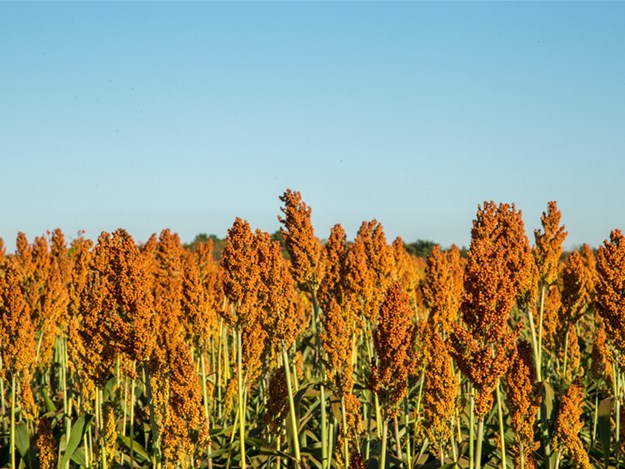Australia’s third-largest grain crop could see a rise in value and versatility after researchers at the University of Queensland mapped genomes which could increase the grain size of the crop.
 |
|
The research identified 125 different regions in the sorghum genome which were associated with grain size, however environmental conditions were also a contributing factor
|
Sorghum has often been affected by the smaller size of its grains; however, the drought-resilient crop could be in line for a potential growth spurt following revelations made by UQ.
Across six years, Professor David Jordan and Dr Yogfu Tao mapped the sorghum genomes to help identify which genes were associated with grain size in line with existing methods which have been used to map other grains such as rise and maize.
The research identified 125 different regions in the sorghum genomes where variations in the DNA sequence was associated with grain size and response to environmental conditions.
The research, which was initially published in The Plant Journal, could help breeders expand the crop’s potential in the future.
“New variants have been identified that are capable of doubling grain weight,” Tao says
“These traits are strongly inherited, with genes accounting for as much as 80 per cent of the grain size characteristics.
“We demonstrated that genetic diversity exists in the sorghum gene pool for grain size,” he said.
“Genetic makeup largely determined an individual sorghum plant’s grain size, however environmental conditions also had an effect.
“This allows us to identify the genetic control of grain size with minimal change to environmental resources, such as water or nitrogen.”
Jordan says the potential now for Sorghum is increasingly strong given its consumption by animals and humans across most of the world.
“Sorghum is Australia’s third-largest grain crop, providing vital feed to animals, but it is increasingly being used in cereals and other foods for human consumption,” Jordan says.
“Sorghum has been an important dietary source of starch in Africa for thousands of years, but it is increasingly valued in Western diets as a low-GI, gluten-free and nutritious grain.
“Larger grains make it more digestible for both people and animals and improves processing efficiency.”
The research included wild relatives of domesticated sorghum and native Australian sorghum.

